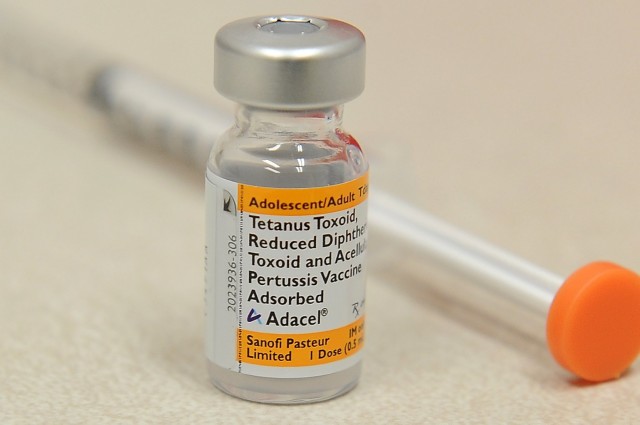
A new rise in whooping cough cases in California is raising questions among doctors about whether there are problems with the current vaccine. California public health data show a spike in whooping cough cases in 2013 compared to the year before, and last week officials confirmed the first death from the disease since the major outbreak of 2010: an infant in Riverside.
Whooping cough, or pertussis as it is referred to in medical circles, is cyclical in nature and tends to peak every three to five years. But doctors are now finding evidence that the new vaccine may start to wear off on a similar timeline, despite medical recommendations that allow for a span of eight years between booster shots.
“The efficacy of the new vaccine is really good, it works. It’s just that it wanes, and it wanes more quickly,” said Dr. Michael Witte, a pediatrician in Pt. Reyes, north of San Francisco.
The new acellular whooping cough vaccine was introduced in the 1990s. It has fewer side effects than the earlier whole-cell vaccine that had been in use since the 1940s. By 2001, the old vaccine was completely phased out. So while many adolescent kids have received boosters of the new vaccine, they would have gotten shots when they were babies that included the old vaccine.